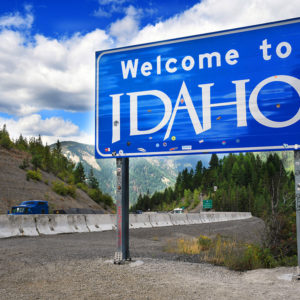The 2020 election is in full swing and voters are looking for answers on how America moves past the pandemic to reopen our economy and get people back to work. But not all share this sentiment.
Many environmental activists rather see the pandemic as a crisis to exploit and leverage, seizing upon the misery of reduced economic output as a model for a “greener future.” The extent to which the far-left environmentalists are willing to throttle the recovery and prolong the misery of millions of American families is striking, yet is ongoing throughout the country.
A flashpoint of the battle between economic recovery and the environmental agenda is now on display in Idaho, where a significant investment in the nationally crucial Stibnite Gold Project is underway.
In development by Midas Gold for more than a decade, the Stibnite Gold Project is a “pioneering” undertaking rooted in partnership with the communities surrounding the historic Stibnite Mining District, an abandoned legacy brownfields mining site. For decades it has sat idle, a monument to environmental blight and wasted economic assets.
But while the mining district may be a mess of fouled salmon streams, spent ore waste, and abandoned mining pits, below the surface exists one of the largest deposits of gold and antimony in the country.
Antimony, some may recall, is a critical mineral used for everything from defense and aerospace to consumer electronics; the fact that America is largely dependent upon China for its supply provides further insight into the economic value of this project.
By all measures Stibnite represents the ideal economic undertaking. It turns waste into value, boosts state economic development, creates critical jobs, initiates environmental cleanup, and weans America from foreign dependence on critical minerals central to industry and national defense.
Amid the most severe economic downturn of our lives, it’s a shovel-ready economic bolt from the blue.
But the radical environmentalists are having none of it. Funded by the deep pockets of national “green” organizations zealously opposed to anything related to mining, they are wholly prepared to eliminate the enormous economic and environmental benefits of this project merely to make an ideological point.
And Stibnite is far from an isolated incident; the same blueprint of protests and court battles is underway in opposition to the Pebble Mine in Alaska, making good on their threats that no mining, energy, or exploration project will go unchallenged.
Despite the misinformation regarding mining being promulgated by its environmentalist opponents, Midas Gold’s proposal would use modern, heavily regulated mining to responsibly extract hundreds of millions of pounds of valuable domestic resources.
Proceeds of the mining activities would also be used to reclaim the land and water damaged by earlier and largely unregulated mining.
The company has already invested more than $200 million in exploring, evaluating, and planning the Stibnite Gold Project, including roughly $90 million in the state of Idaho.
If the radical eco-warriors succeed they will not only sink these investments but over $1 billion more that will follow to cover operations; an outright hostile position to take toward communities desperate for jobs and development that also delivers a black eye to kick starting crucial infrastructure projects across the nation.
And again, the Department of Defense considers antimony to be one of the most important “critical minerals” to our national security. We need it desperately — and we currently produce none of it domestically.
The extreme environmentalist agenda would leave us dependent upon China, the world’s leading producer by far, in perpetuity, an absolutely reckless position.
Highlighting just how extreme the opponents of Stibnite are, there is currently no other path toward reclamation or cleanup, meaning the greens are willing to let an environmental hazard remain in place just so it can be prevented from being made economically viable.
This is the radical anti-market agenda America’s now-struggling economy is up against, not just in Idaho, but nationwide.
The U.S. Forest Service is in the process of taking public comments on the Draft Environmental Impact Statement for the Stibnite Gold Project.
As the comment period moves forward, and as the permitting and approval process reaches its conclusion, it is essential that policymakers, regulators, and other stakeholders recognize the vital role reclamation projects in pursuit of America’s natural resources can play in our economic outlook as they disregard the hysterics of the dogmatic environmentalist crowd.
The Stibnite Gold Project is good for Idaho and good for our nation — it deserves our support.

